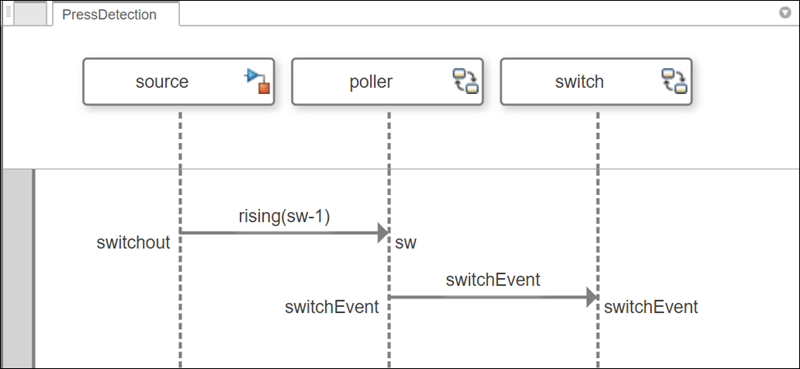systemcomposer.interaction.FormalGate
说明
FormalGate 对象表示序列图门上的消息事件。在架构模型中,一个门对应一个根架构。
交互边界上的消息末端允许消息进出交互。形式化门表示为交互作用序列图左边界上的一条缝隙。门包含在交互片段中。
创建对象
通过相应 systemcomposer.interaction.Interaction 对象的 RootFragment 属性访问 FormalGate 对象。遍历根片段,检查片段中的 FormalGate 和 systemcomposer.interaction.MessageEvent 对象。
属性
对象函数
destroy | 移除模型元素 |
示例
详细信息
版本历史记录
在 R2024a 中推出
另请参阅
工具
函数
openViews|sim|addInteraction|getInteraction|getInteractions|open|addLifeline|addFragment|addOperand|addMessage|addDurationConstraint|addAnnotation|findLifeline|findElement|move|move|move|destroy|next|current|reset
对象
systemcomposer.arch.Model|systemcomposer.interaction.Interaction|systemcomposer.interaction.Iterator|systemcomposer.interaction.Lifeline|systemcomposer.interaction.MessageEvent|systemcomposer.interaction.Message|systemcomposer.interaction.Fragment|systemcomposer.interaction.Operand|systemcomposer.interaction.DurationConstraint|systemcomposer.interaction.Annotation

